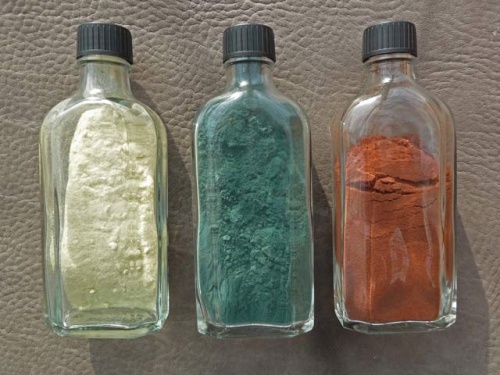Difference between revisions of "Tannins"
| Line 4: | Line 4: | ||
| − | Tannins (tanning agents) are chemicals used by [[tanner|tanners]] to prevent the disintegration of the collagen fibres of the leather. These chemicals are absorbed by the hides and skins during the [[leather production|tanning process]]. They bind to the protein collagen in the skins and prevent the disintegration of the fibres by turning them into [[leather]]. Without this, the skins would decompose. A variety of tanning agents are used for tanning but the three main types of tanning are [[Vegetable-tanned leather|vegetable tanning]], which involves the use of plant substances, [[Chrome tanned|chromium III]] and [[Synthetic tanned|synthetic]] tanning. Finished leather contains about 8 to 45% of tannins. | + | Tannins (tanning agents) are chemicals used by [[tanner|tanners]] to prevent the disintegration of the collagen fibres of the leather. These chemicals are absorbed by the hides and skins during the [[leather production|tanning process]]. They bind to the protein collagen in the skins and prevent the disintegration of the fibres by turning them into [[leather]]. Without this, the skins would decompose. Tanning agents must have a particle size that permits them to penetrate into the collagen fibrils and must be able to react with the collagen (cross-linking effect on the fibrils). |
| + | |||
| + | A variety of tanning agents are used for tanning but the three main types of tanning are [[Vegetable-tanned leather|vegetable tanning]], which involves the use of plant substances, [[Chrome tanned|chromium III]] and [[Synthetic tanned|synthetic]] tanning. Finished leather contains about 8 to 45% of tannins. | ||
Latest revision as of 13:49, 9 January 2023
Tannins (tanning agents) are chemicals used by tanners to prevent the disintegration of the collagen fibres of the leather. These chemicals are absorbed by the hides and skins during the tanning process. They bind to the protein collagen in the skins and prevent the disintegration of the fibres by turning them into leather. Without this, the skins would decompose. Tanning agents must have a particle size that permits them to penetrate into the collagen fibrils and must be able to react with the collagen (cross-linking effect on the fibrils).
A variety of tanning agents are used for tanning but the three main types of tanning are vegetable tanning, which involves the use of plant substances, chromium III and synthetic tanning. Finished leather contains about 8 to 45% of tannins.
Different tanning agents: synthetic tannins, Chrome III, Quebracho (vegetable tannin).
Tannins - Tanning agents
Videos about the leather production
The leather production in a modern tannery.
The leather production with tannins of the oak.
Chamois leather production in Germany.
| Tanning methods |
|---|
| Chrome tanning - Vegetable-tanned leather - Synthetic tanning - Tanning with fats and oils |









 a kotori web solution
a kotori web solution